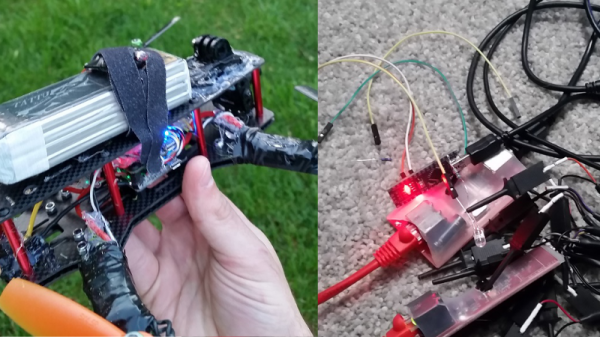The idea of purpose is one of great importance to many sentient beings; one can only imagine the philosophical terror experienced by a robot designed solely to pass butter. Perhaps wishing to create a robot with more reason to exist, [Micah “Chewy” Leibowitz] decided to build this battlebot armed with a flamethrower, named Flamewar.
In the video, we see it rather successfully facing off against a robot named T800, at least in the early part of the fight. T800 is armed with a spinning weapon, and while it is able to deliver a heavy thump thanks to stored kinetic energy, more often than not T800 seems to knock itself over rather than do any serious damage to Flamewar. Flamewar is repeatedly able to fire its primary weapon, as the flamethrower is built into its arms, far above the reach of T800’s armament. We won’t spoil the ending of the fight. Video below the break.
The robot was built by [Micah] who competes with [Team Tiki], who have documented some of their past builds online. We would like to see some footage of Flamewar actually passing some butter, though. The bout was a part of Robogames 2017, and we’re impressed that such things like flamethrowers are allowed in the rules. Obviously safety is a paramount concern of these events, so it’s awesome to see they’ve found a way to make things work.
If you’re unaware of the dairy product reference, fill yourself in here. We’ve seen other takes on this, too.
We love seeing combat robots here at Hackaday. If you’re thinking about getting started yourself, why not get started with an ant-weight bot to cut your teeth?






















